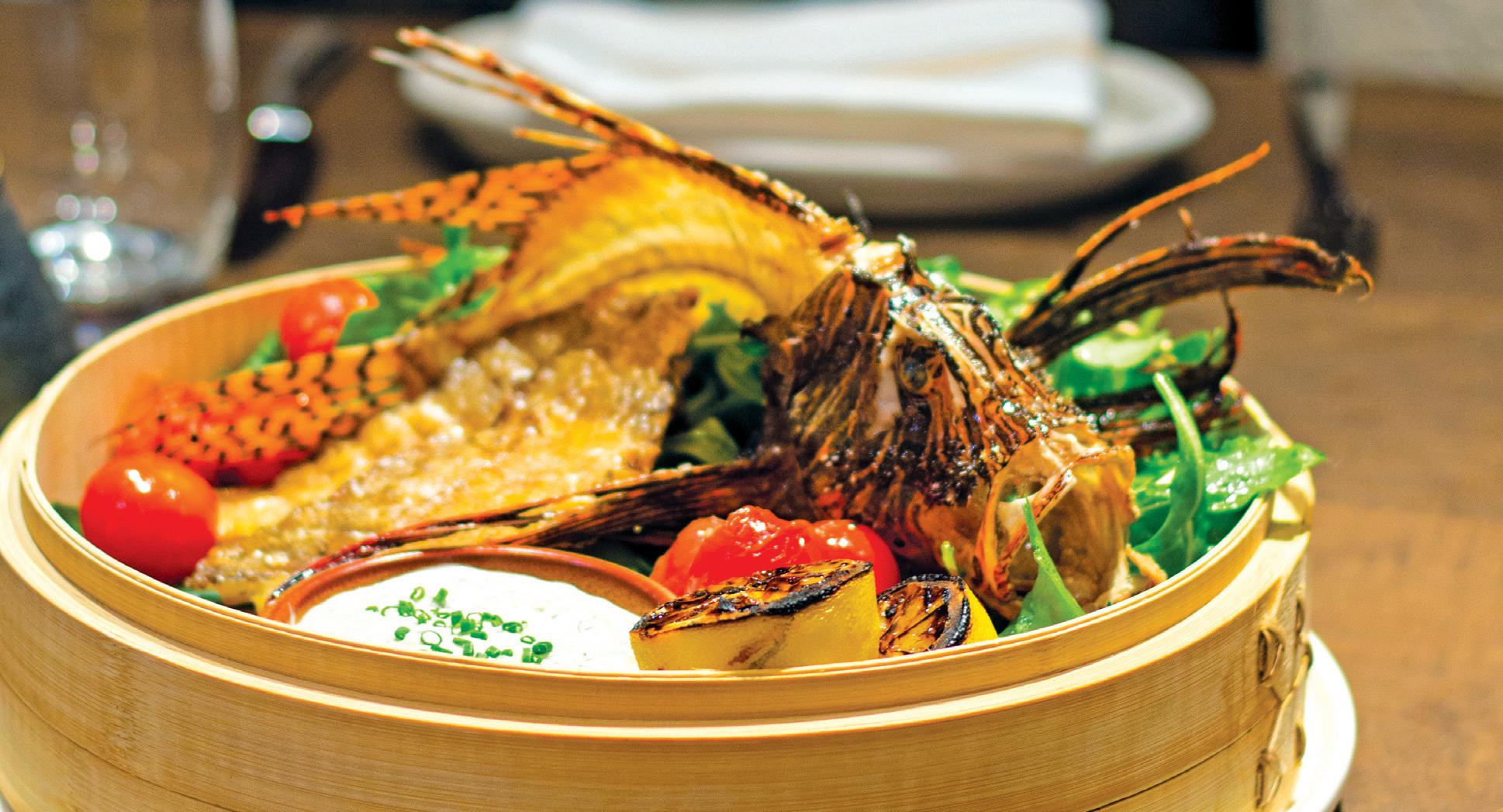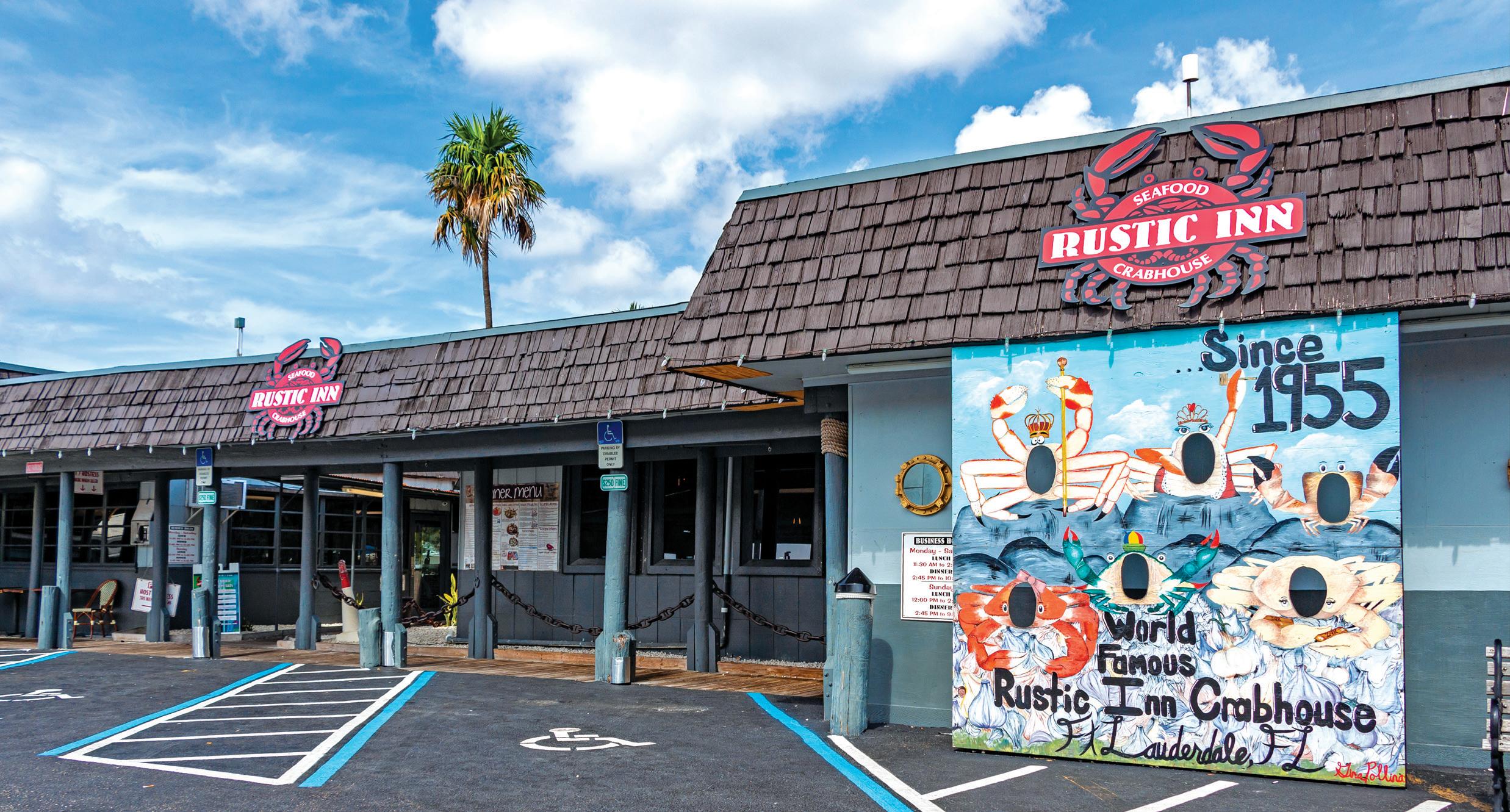
5 minute read
THEGOLDCOAST’S BESTCATCH
If you’ve been to a Florida seafood restaurant, there’s something at many of them that might surprise you: Alaskan king crab, Pacific salmon, West Coast oysters, and lobsters flown in from New England.
Where’s the local seafood, you ask? Luckily we’ve scoured seafood houses to find a few gems on the Gold Coast serving up grouper, snapper, shrimp, rock lobster and other local catch from Florida’s shores.
LIONFISH, DELRAY BEACH
Named for an invasive fish that has devastated local reefs in recent years, Lionfish obviously had to feature the namesake catch. That was harder than you might think, says executive chef Aaron Panganiban. Most restaurants source their fish from large national suppliers who buy from the big markets in Los Angeles and New York City, so Panganiban had to start from scratch to find a local supplier. He had luck with an unlikely source, Instagram, where he found locals who were fishing sustainably. Now, Panganiban says he buys spear gun-caught lionfish from Nate Sorensen, the “lionfish exterminator,” and Eric Finn of Finn-Atic Fish Co. The restaurant also buys swordfish, tilefish, and snapper from Vince Palmer of Third Wind Seafood. Buying this way isn’t easy—what’s on the menu from night to night depends on good weather for the fishermen and how well they did that day. But recently caught fish makes all the difference in the quality of a dish, says Panganiban. “Getting fish locally means knowing how long they’ve been out of the water, trusting the source, and knowing that they have been handled with the most care possible since they’re out of the water until the time we receive them,” he says. “We can honestly source where and when they came and the conditions they were in from the time they were caught, which makes the biggest difference in quality.”
LITTLE MOIR’S FOOD SHACK, JUPITER
Mike Moir was the youngest of eight children, so it’s only natural that he earned the title “Little Moir.” It’s a nickname he kept when he started working in kitchens at 14 years old. He used the name in opening his Jupiter restaurant in 2002, Little Moir’s Food Shack, where he combined what he’d learned working at restaurants with what he’d discovered traveling from Peru to Jakarta. Located in an unassuming strip mall, the place looks like a well-worn diner, full of kitsch and often crowded with locals who will wait hours outside. At the Food Shack and its sister restaurant, Leftovers Cafe, expect an eclectic menu full of the seafood that swims in waters nearby. Menus are printed up daily, scribbled by hand with dozens of seafood dishes, like swordfish sliders, smoked fish dip, or the recent lunch special, tandoori corvina. You can order daily catch specials such as wahoo and vermilion snapper simply grilled, crusted in sweet potato, or in combinations you just won’t find anywhere else. A recent special of seared tuna with a blueberry sauce might sound strange, but the spicy crust on the tuna plays so well with the sweet sauce, showing the kind of skill that you might be surprised to find at a place that’s proudly called a shack.
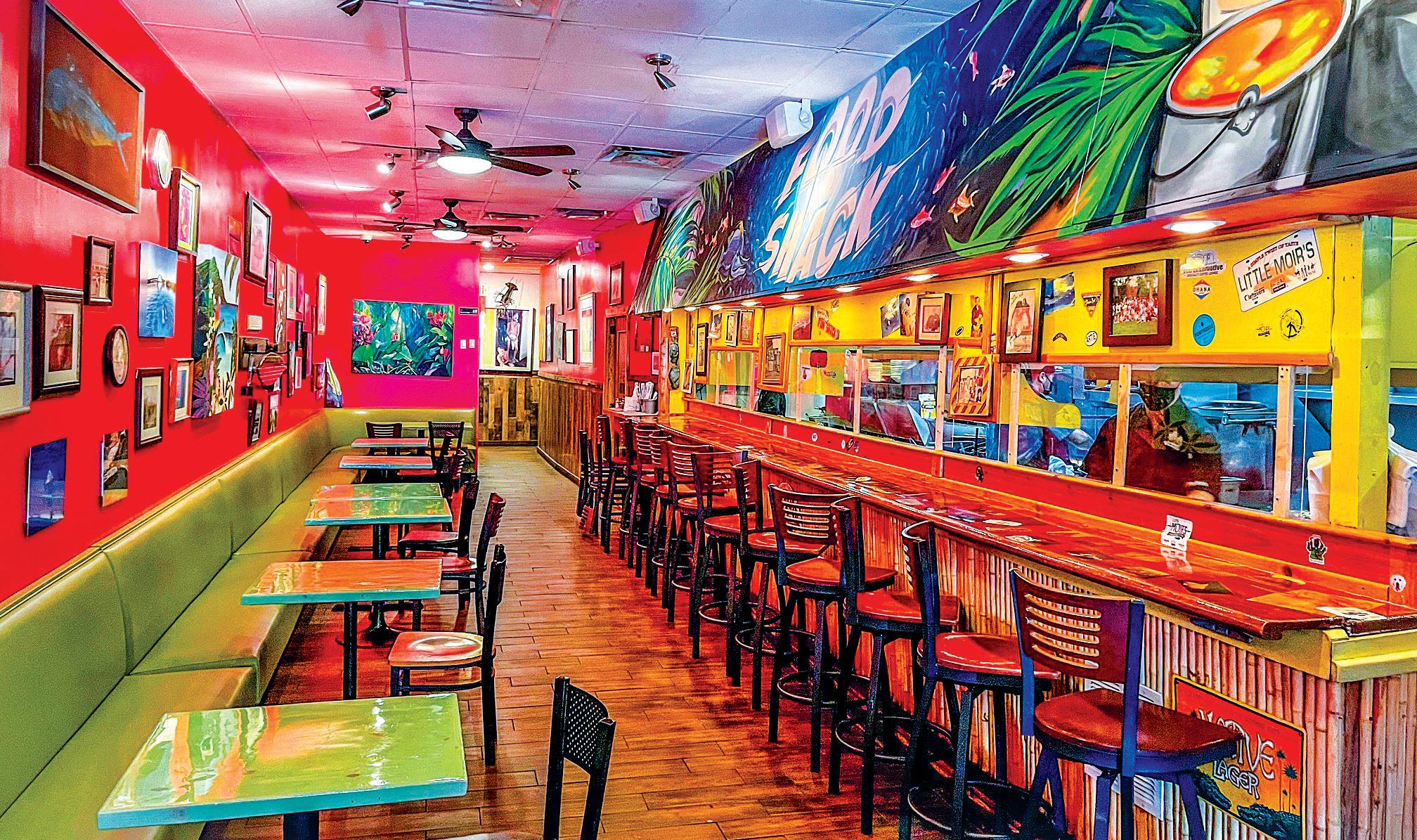
RUSTIC INN, FORT LAUDERDALE
Walking into the massive Rustic Inn today, it’s hard to imagine its humble beginnings in 1959 as a roadside crab house. The story goes that the original owner, the late Henry Oreal, used to catch crabs in the canal out back just for himself and only started selling them after a customer asked if he could try them. Now, the Rustic Inn serves East Coast golden crab, a rare find on Florida menus. Big platters of the crab make their way through the restaurant, wafting the aroma of garlic and butter in their wake. The menu also features swordfish caught with the more sustainable hook-andline method in local waters, instead of the trawling nets that have wreaked havoc on oceans. The restaurant’s 600 seats are spread across multiple rooms and a massive screen porch overlooks the canal. In fact, the place is so busy it earned a spot on a list of the top 100 highest-earning restaurants in the country, serving a reported 370,000 meals yearly and annual sales of more than $16 million. The space is often stuffed with tourists and locals wearing bibs and banging away with wooden mallets that give the restaurant a constant drum beat.
SEASPRAY INLET GRILL, BOCA RATON
SeaSpray arrived in Boca Raton in June 2021 as part of an extensive renovation of the Waterstone Resort and Marina. As the name suggests, the 2,000-square-foot, 100-seat spot is directly on the Boca Raton Inlet, the only waterfront restaurant in town open to the public. In creating the new menu, executive chef Kelley Randall says he aimed to highlight the freshness of fish that swim nearby. As a result, he set out to find suppliers who could provide what’s caught locally. Just a few years ago, Randall says restaurants generally ordered fish only from big national suppliers. But a “sea to table” dining movement has created a network connecting fishermen and kitchens. Seasonal availability means constantly changing the menu, and being a responsible chef, he says, means keeping track of which species are on the verge of becoming overfished, and removing them from the menu. “This can lead to shortages at certain times of the year, which can make it more difficult to procure what exactly we are looking to get for the day, but the massive array and variety of seafood in South Florida makes it easy to always have a great day,” Randall says. The result of that work can be seen in Randall’s smoked fish dip, the mahi Reuben, the fresh catch plate, and a mahi-mahi grilled simply so diners can tell it was caught in waters not far away.
These days, many of us have an ever-increasing interest in patronizing local stores and restaurants when visiting a destination. So, indulging in fish and seafood available in the waters of the Gold Coast means you’re doing good—deliciously.
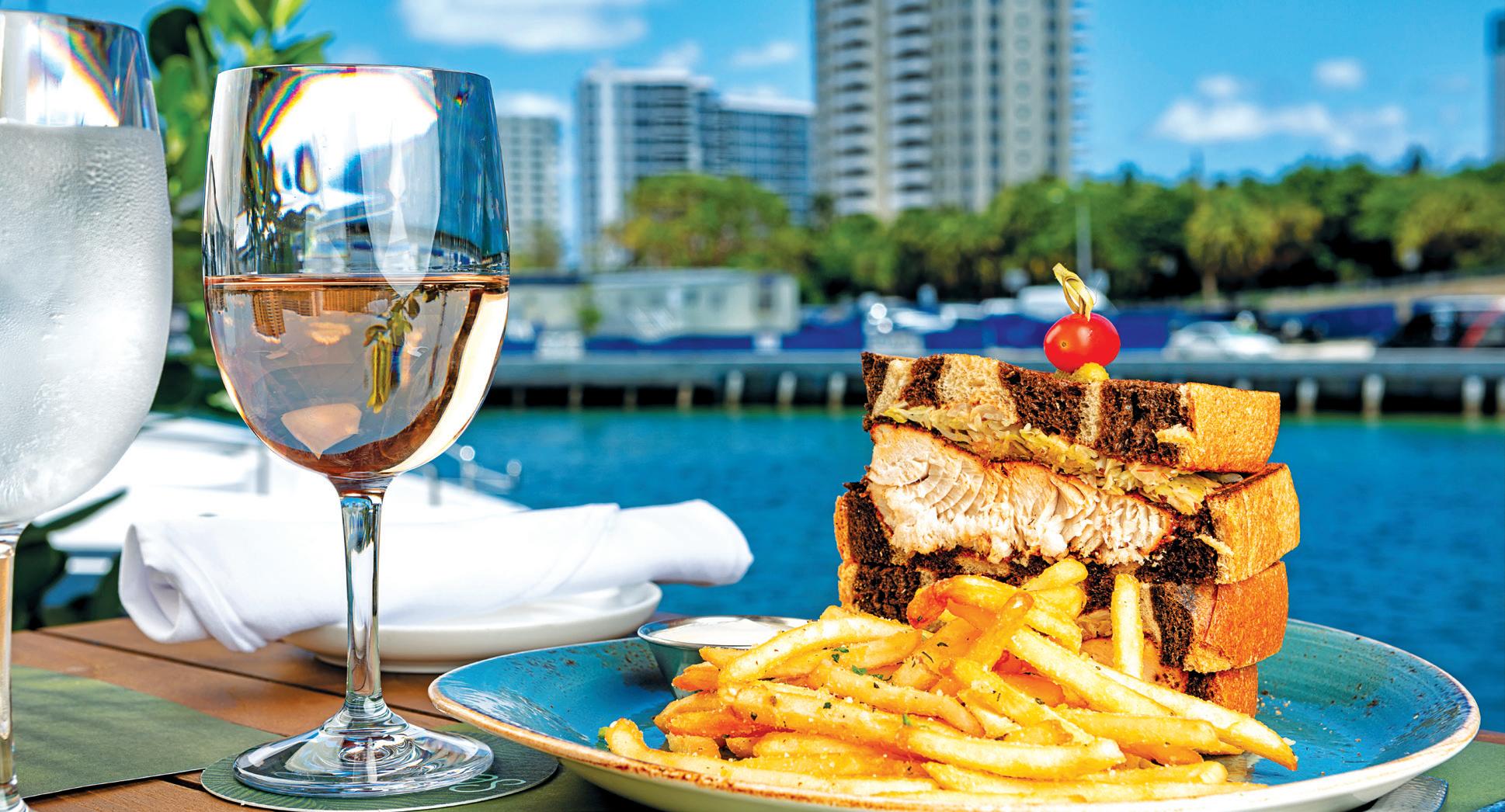
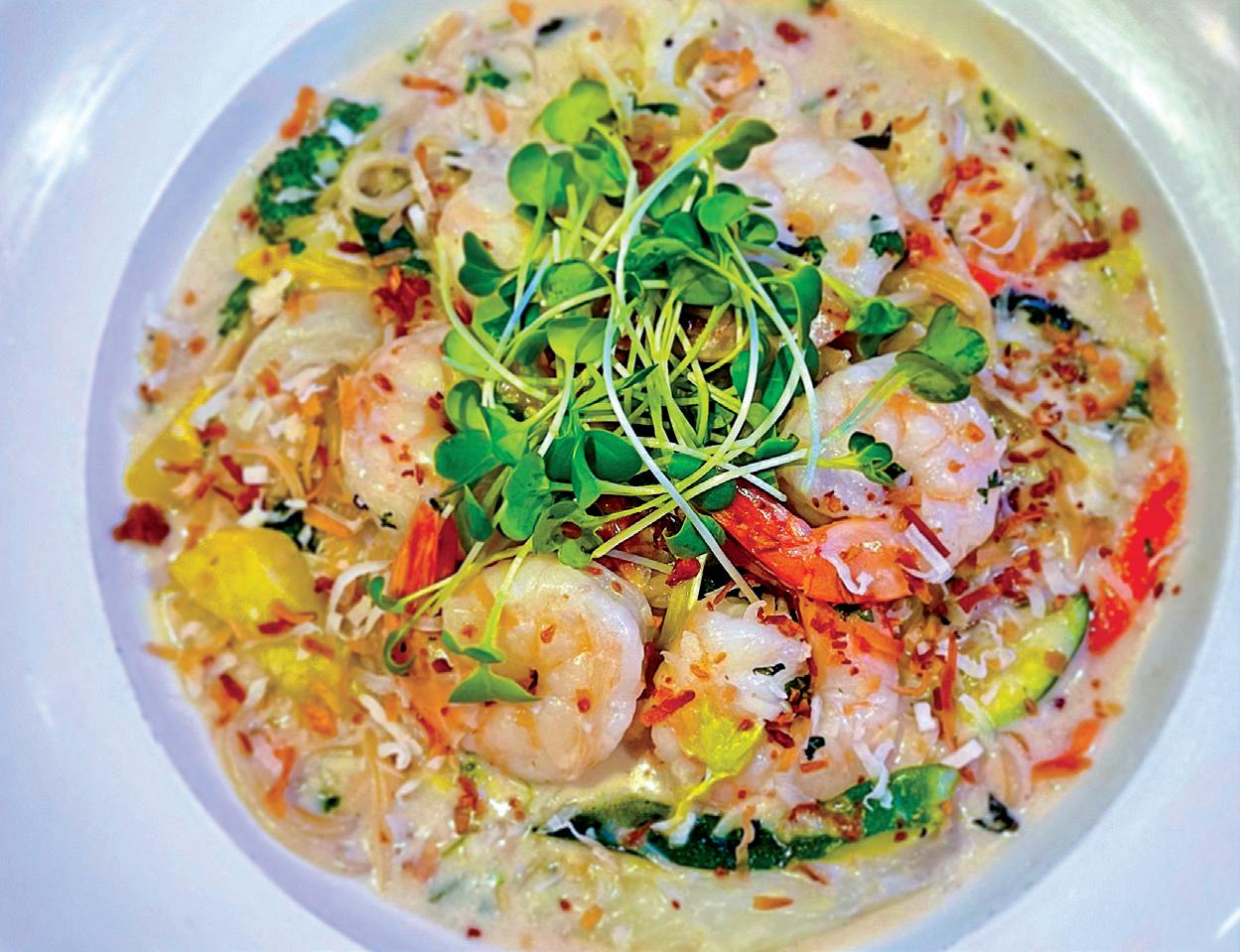
Opposite page: Little Moir’s Food Shack has a welcoming vibe and handwritten menus with daily specials. This page, clockwise from top left: Seaspray Inlet’s Mahi Reuben; Little Moir’s Sweet Potato Crusted Fish and Tuna Basil Rolls; Lionfish’s Crispy Whole Lionfish; Little Moir’s Sweet and Spicy Bowl.

